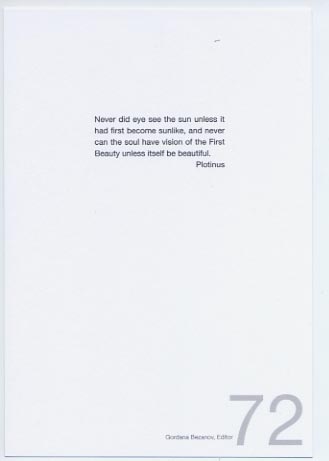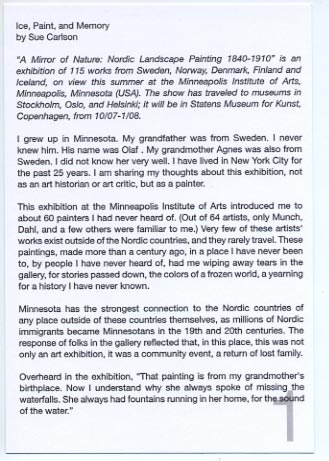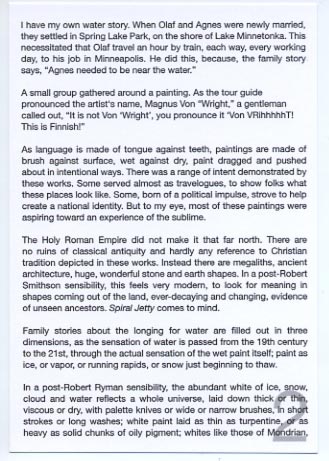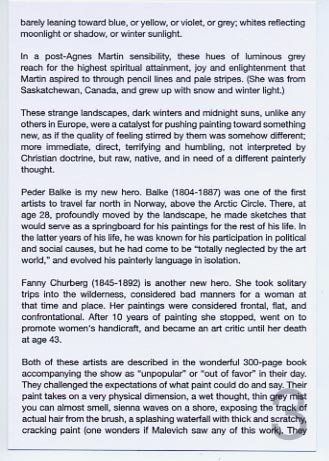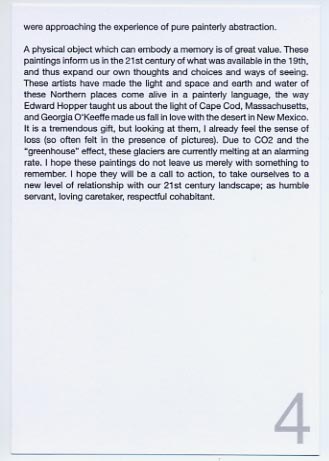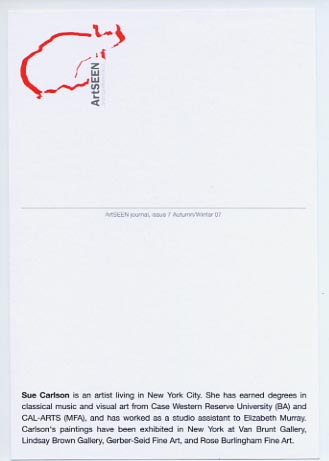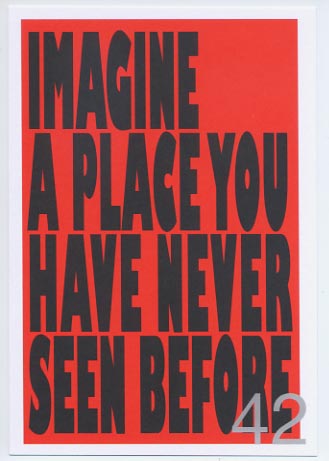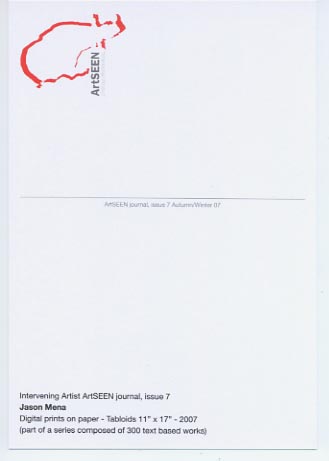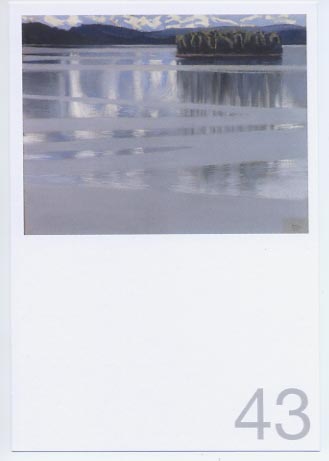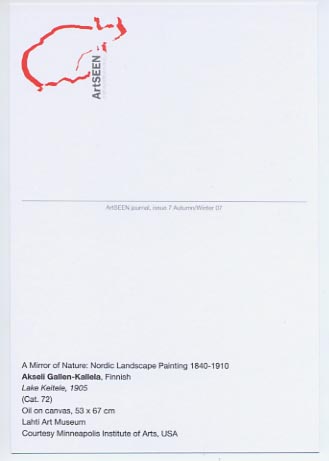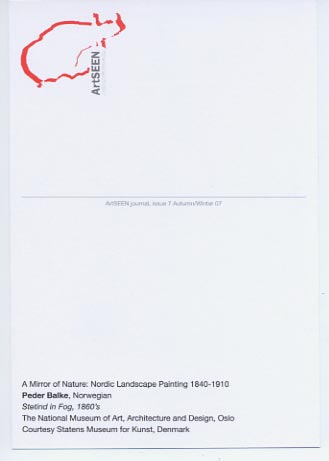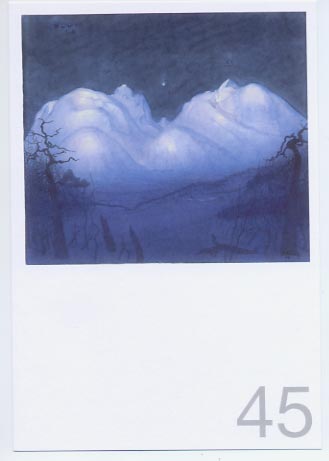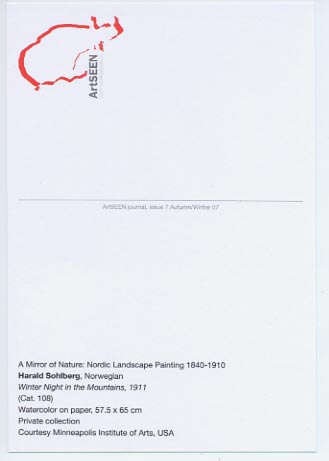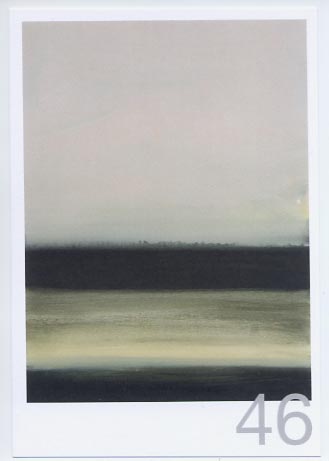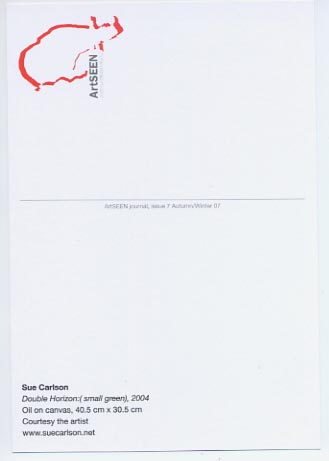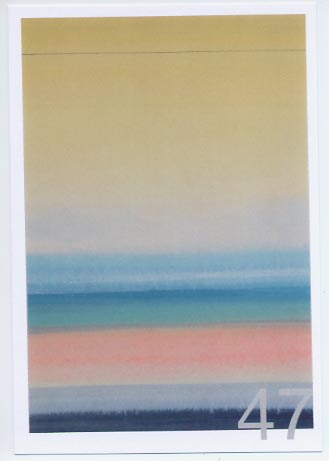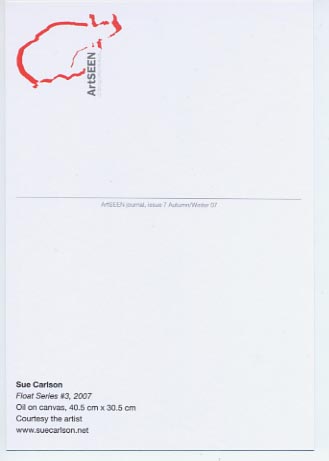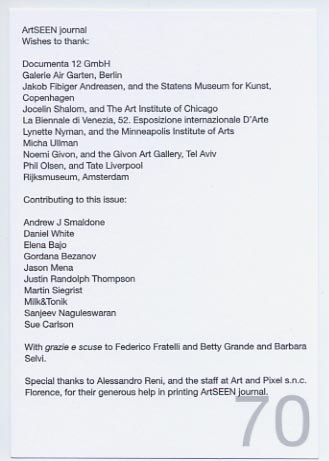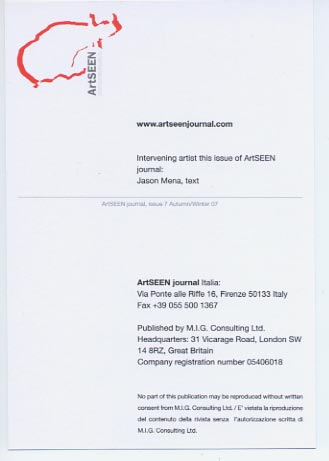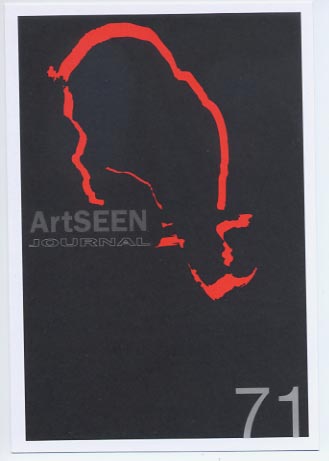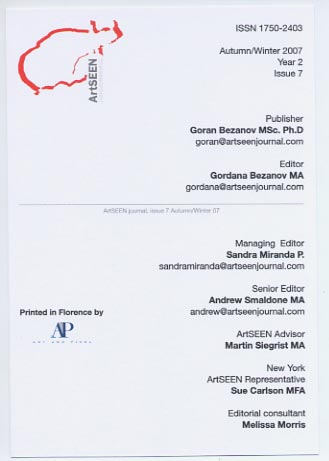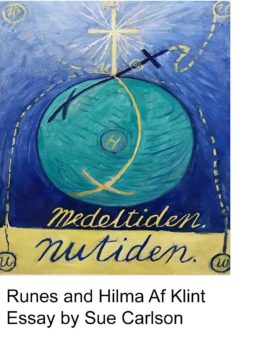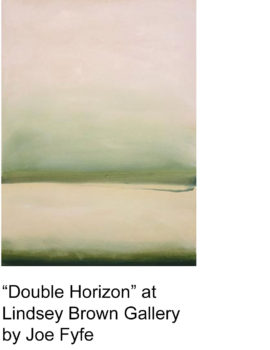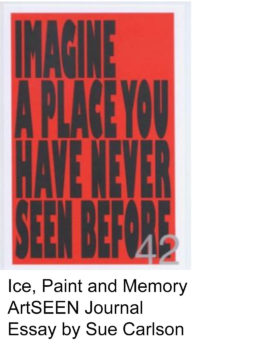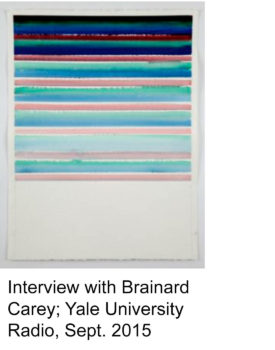“ICE, PAINT and MEMORY”, by SUE CARLSON (2007) is a review of the exhibition “A Mirror of Nature: Nordic Landscape Painting 1840-1910” , published in ArtSEEN Journal, Winter, 2007. This issue of ArtSEEN Journal was published as a limited edition (100) artist’s book, printed as a box set of 72 postcards.
“A Mirror of Nature” was an exhibition of 115 paintings from Sweden, Norway, Denmark, Finland and Iceland, a collaboration on a mutual exhibition between Nationalmuseum, Stockholm, Ateneum Art Museum, Helsinki, The National Museum of Art, Architecture and Design, Oslo, Statens Museum for Kunst, Copenhagen and the Minneapolis Institute of Art, USA.
ICE, PAINT, and MEMORY
I grew up in Minnesota. My grandfather was from Sweden. I never knew him. His name was Olaf . My grandmother Agnes was also from Sweden. I did not know her very well. I have lived in New York City for the past 25 years. I am sharing my thoughts about this exhibition, not as an art historian or art critic, but as a painter.
This exhibition at the Minneapolis Institute of Arts introduced me to about 60 painters I had never heard of. (Out of 64 artists, only Munch, Dahl, and a few others were familiar to me.) Very few of these artists’ works exist outside of the Nordic countries, and they rarely travel. These paintings, made more than a century ago, in a place I have never been to, by people I have never heard of, had me wiping away tears in the gallery, for stories passed down, the colors of a frozen world, a yearning for a history I have never known.
Minnesota has the strongest connection to the Nordic countries of any place outside of these countries themselves, as millions of Nordic immigrants became Minnesotans in the 19th and 20th centuries. The response of folks in the gallery reflected that, in this place, this was not only an art exhibition, it was a community event, a return of lost family.
Overheard in the exhibition, “That painting is from my grandmother’s birthplace. Now I understand why she always spoke of missing the waterfalls. She always had fountains running in her home, for the sound of the water.”
I have my own water story. When Olaf and Agnes were newly married, they settled in Spring Lake Park, on the shore of Lake Minnetonka. This necessitated that Olaf travel an hour by train, each way, every working day, to his job in Minneapolis. He did this, because, the family story says, “Agnes needed to be near the water”.
A small group gathered around a painting. As the tour guide pronounced the artist’s name “Magnus Von Wright”, a gentleman called out, “it is not Von Rite, you pronounce it “Von VRihhhhhT! This is Finnish!”
As language is made of tongue against teeth, paintings are made of brush against surface, wet against dry, paint dragged and pushed about in intentional ways. There was a range of intent demonstrated by these works. Some served almost as travelogues, to show folks what these places look like. Some, born of a political impulse, strove to help create a national identity. But to my eye, most of these paintings were aspiring toward an experience of the “sublime” .
The Holy Roman Empire did not make it that far north. There are no ruins of classical antiquity and hardly any reference to Christian tradition depicted in these works. Instead there are megaliths, ancient architecture, huge, wonderful stone and earth shapes. In a post-Robert Smithson sensibility, this feels very modern, to look for meaning in shapes coming out of the land, ever decaying and changing, evidence of unseen ancestors. Spiral Jetty comes to mind.
Family stories about the longing for water are filled out in three dimensions, as the sensation of water is passed from the 19th century to the 21st, through the actual sensation of the wet paint itself; paint as ice, or vapor, or running rapids, or snow just beginning to thaw.
In a post-Robert Ryman sensibility, the abundant white of ice, snow, cloud and water reflects a whole universe, laid down thick or thin, viscous or dry, with palette knives or wide or narrow brushes, in short strokes or long washes; white paint laid as thin as turpentine, or as heavy as solid chunks of oily pigment; whites like those of Mondrian, barely leaning toward blue, or yellow, or violet, or grey; whites reflecting moonlight or shadow, or winter sunlight.
In a post-Agnes Martin sensibility, these hues of luminous grey reach for the highest spiritual attainment, joy and enlightenment, that Martin aspired to through pencil lines and pale stripes. (She was from Saskatchewan, Canada, and grew up with snow and winter light.)
These strange landscapes, dark winters and midnight suns, unlike any others in Europe, were a catalyst for pushing painting toward something new, as if the quality of feeling stirred by them was somehow different; more immediate, direct, terrifying and humbling, not interpreted by Christian doctrine, but raw, native, and in need of a different painterly thought.
Peder Balke is my new hero. Balke, (1804-1887) was one of the first artists to travel far north in Norway, above the Arctic Circle. There, at age 28, profoundly moved by the landscape, he made sketches that would serve as a springboard for his paintings for the rest of his life. In the latter years of his life, he was known for his participation in political and social causes, but he had come to be “totally neglected by the art world”, and evolved his painterly language in isolation.
Fanny Churberg (1845-1892) is another new hero. She took solitary trips into the wilderness, considered bad manners for a woman at that time and place. Her paintings were considered frontal, flat, and confrontational. After 10 years of painting she stopped, went on to promote women’s handicraft, and became an art critic until her death at age 43.
Both these artists are described in the wonderful 300 page book accompanying the show as “unpopular” or “out of favor” in their day.They challenged the expectations of what paint could do and say. Their paint takes on a very physical dimension, a wet thought, thin grey mist you can almost smell, sienna waves on a shore, exposing the track of actual hair from the brush, a splashing waterfall, with thick and scratchy, cracking paint (one wonders if Malevich saw any of this work). They were approaching the experience of pure painterly abstraction.
A physical object which can embody a memory is of great value. These paintings inform us in the 21st century of what was available in the 19th, and thus expand our own thoughts and choices and ways of seeing. These artists have made the light and space and earth and water of these Northern places come alive in a painterly language, the way Edward Hopper taught us about the light of Cape Cod, Massachusetts, and Georgia O’Keefe made us fall in love with the desert in New Mexico. It is a tremendous gift, but looking at them, I already feel the sense of loss (so often felt in the presence of pictures). Due to CO2 and the “greenhouse” effect, these glaciers are currently melting at an alarming rate. I hope these paintings do not leave us merely with something to remember. I hope they will be a call to action, to take ourselves to a new level of relationship with our 21st century landscape; as humble servant, loving caretaker, respectful co-habiter.
